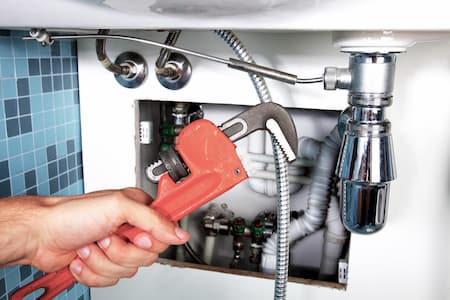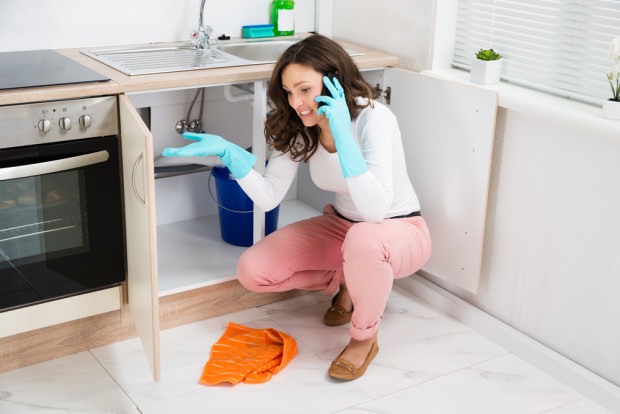When to Manage Piping Concerns Yourself vs. When to Call a Qualified Plumber
When to Manage Piping Concerns Yourself vs. When to Call a Qualified Plumber
Blog Article
This article on the next paragraphs pertaining to When to DIY and When to Call a Professional Plumber is rather engaging. You should read it.

Introduction
Pipes issues can range from small troubles to major headaches, often motivating house owners to choose between dealing with the problem themselves or employing an expert plumber. Knowing when to do it yourself and when to look for professional aid can save time, cash, and protect against possible calamities. This write-up discovers the factors to take into consideration when making this important choice.
Advantages of Do It Yourself Pipes
Handling pipes jobs yourself can be fulfilling in several ways, especially for less complex projects.
Complexity of Jobs
Some pipes problems require specialized knowledge and devices beyond regular homeowner capabilities. Messing up complicated problems can lead to more damages and expensive repair work.
Safety Problems
Working with pipes systems includes risks such as direct exposure to water damage, possibility for electrical threats, and managing tools inaccurately. Safety and security safety measures have to be observed to prevent accidents and ensure reliable fixings.
Indicators to Call a Specialist Plumbing
Recognizing when a plumbing concern exceeds do it yourself capabilities is critical to preventing intensifying issues.
Indicators of Complicated Issues
Examples consist of:
Trigger specialist intervention is required to attend to these problems effectively and lessen damage.
Do It Yourself Pipes Tips
For successful do it yourself pipes, it's vital to be prepared with the right devices and follow correct procedures.
Basic Devices and Materials
Secret tools for do it yourself pipes:
Step-by-Step Guides
Clear guidelines guarantee safe and effective do it yourself repair services:
Choosing the Right Time to DIY
Identifying when to take on plumbing tasks on your own needs examining both the intricacy of the concern and personal comfort degrees.
Assessment List
Consider:
Cost Savings
DIY pipes tasks usually save cash by preventing professional service fees. Jobs like dealing with minor leaks, changing taps, or setting up brand-new showerheads are examples where property owners can manage repair services without working with a plumbing technician.
Skill Improvement
Taking part in DIY plumbing offers an opportunity to learn and improve functional abilities. Fundamental tasks equip house owners to understand their plumbing systems better and gain self-confidence in handling little repair work individually.
Threats of DIY Plumbing
While DIY tasks offer benefits, particular risks must be meticulously considered before attempting fixings.
When to Absolutely Call a Professional
Certain situations require instant professional focus to avoid substantial damage or safety hazards.
Emergency Scenarios
Examples include:
Finding and Working With a Specialist Plumbing Technician
Picking a certified plumbing technician ensures reputable service and assurance in dealing with plumbing problems.
Requirements for Selection
Variables to take into consideration:
Cost Evaluation: DIY vs. Expert Providers
Comparing the financial effects of DIY efforts versus specialist plumbing solutions aids in making educated choices.
Financial Considerations
Evaluate:
Final thought
Deciding whether to do it yourself or call a professional plumber rests on recognizing the complexity of pipes concerns and personal capacities. By considering the advantages and dangers, homeowners can make educated selections that advertise efficient upkeep and safeguard their homes from plumbing calamities.
DIY Plumbing Projects: What Homeowners Can Do and When to Call a Professional
Welcome to our comprehensive guide on DIY plumbing projects. In this blog post, we aim to empower homeowners with the knowledge and skills to tackle basic plumbing tasks around the house. From unclogging drains to fixing a leaky faucet, we’ll walk you through step-by-step instructions on how to handle these common issues.
However, not all plumbing problems can or should be solved with a DIY approach. Recognizing when a problem is beyond your skill level and requires professional intervention is just as important as knowing how to perform basic tasks. We’ll also discuss the signs that indicate it’s time to put down your tools and pick up the phone to call a professional plumber. By understanding when to DIY and when to call a professional, you can save time, avoid potential disasters, and ensure your home’s plumbing system remains in top shape.
Understanding Plumbing Basics
Before we dive into the DIY projects, let’s take a moment to understand the basics of your home’s plumbing system. A typical residential plumbing system consists of two major components: the water supply system, which brings fresh water into your home, and the drainage system, which removes waste water. These systems are made up of a network of pipes, valves, and fixtures that work together to deliver clean water and dispose of waste efficiently.
Regular maintenance of your plumbing system is crucial to prevent minor issues from escalating into major problems. This includes tasks like checking for leaks, removing minor clogs, and ensuring your pipes are insulated for winter. By performing these tasks regularly, you can extend the lifespan of your plumbing system, save money on water bills, and maintain the comfort and hygiene of your home.
In the following sections, we’ll explore some common DIY plumbing projects that homeowners can handle, as well as situations that require the expertise of a professional plumber. Whether you’re a seasoned DIY enthusiast or a beginner, this guide will provide you with valuable insights into the world of home plumbing.
DIY Plumbing Projects Homeowners Can Handle
Plumbing may seem intimidating, but there are several tasks that homeowners can confidently tackle with a little guidance and the right tools. Here are a few common issues you might encounter and how to address them.
Unclogging Drains
Use a Plunger: This is your first line of defense. A good old-fashioned plunger can dislodge the obstruction and clear the drain in many cases. Try a Plumber’s Snake or Hand Auger: If the plunger doesn’t work, a plumber’s snake or hand auger can reach deeper into the pipe to break up the clog. Use a Drain Cleaner: If physical methods fail, a chemical drain cleaner can dissolve the clog. However, use these products sparingly as they can damage your pipes if overused.

I am just very fascinated with and I hope you enjoyed reading the new article. Sharing is nice. You just don't know, you could be doing someone a favor. Kudos for your time. Return soon.
Click Here Report this page